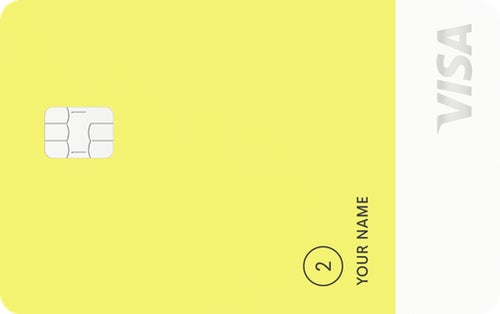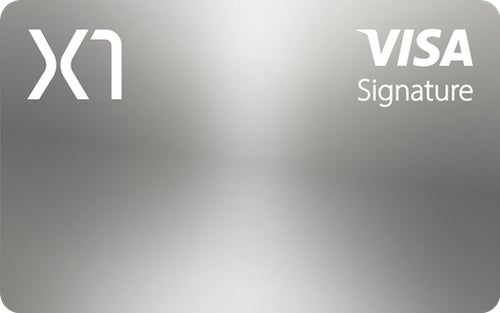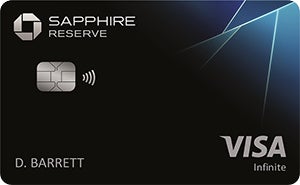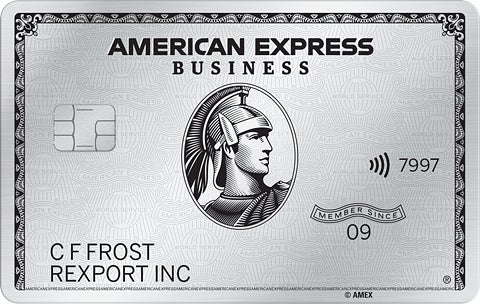Handing over your credit card without worrying about hitting your credit limit may sound glamorous -- but not keeping track of your spending is risky, regardless of your credit limit.
Rather, the perks of having a high-limit credit card are more subtle. A higher credit limit can help boost your credit score by lowering your credit utilization. If you’re looking to finance a large purchase or transfer a balance with a 0% introductory APR card, a high-limit credit card can provide more flexibility. You’ll often find higher credit limits on premium rewards or travel cards, which provide a host of valuable benefits in their own right.
But a high-limit card also opens the door to a tremendous amount of risk, particularly if it entices you to spend outside your budget. Carrying a balance on a higher limit card can cost you much more in interest if you’re unable to pay off your balance in full each month. And higher limit cards can be harder to qualify for, since they’re generally reserved for those with good to excellent credit. Whether you’re considering requesting a credit line increase on an existing card or you’re interested in applying for a new high-limit credit card, here are some of our top recommendations, and advice on how to best use these cards.
With a credit limit starting at $10,000, the Chase Sapphire Reserve is best known as a travel rewards credit card, allowing you to earn points quickly that can be redeemed for travel. But even if you’re not a frequent flier, the points you accrue can be redeemed for merchandise, entertainment and dining.
As with some other high-limit credit cards, you’ll need excellent credit to qualify for this -- and be willing to spend $550 on the annual fee. But the available bonuses can offset that fee. A few nice features of this Chase credit card include an annual $300 statement credit to reimburse travel purchases and Priority Pass access at over 1,300 airport lounges worldwide.
See more details in our full review of the Chase Sapphire Reserve.
- Intro Balance Transfer APR
- N/A
- Intro Purchase APR
- N/A
- Regular APR
- 22.49% – 29.49% Variable
- Balance Transfer Fee
- Either $5 or 5% of the amount of each balance transfer, whichever is greater
With a credit limit starting at $10,000, the Chase Sapphire Reserve is best known as a travel rewards credit card, allowing you to earn points quickly that can be redeemed for travel. But even if you’re not a frequent flier, the points you accrue can be redeemed for merchandise, entertainment and dining.
As with some other high-limit credit cards, you’ll need excellent credit to qualify for this -- and be willing to spend $550 on the annual fee. But the available bonuses can offset that fee. A few nice features of this Chase credit card include an annual $300 statement credit to reimburse travel purchases and Priority Pass access at over 1,300 airport lounges worldwide.
See more details in our full review of the Chase Sapphire Reserve.
- Intro Balance Transfer APR
- N/A
- Intro Purchase APR
- N/A
- Regular APR
- 22.49% – 29.49% Variable
- Balance Transfer Fee
- Either $5 or 5% of the amount of each balance transfer, whichever is greater
Petal® 2 “Cash Back, No Fees” Visa® Credit Card

The Petal 2 Visa Credit Card, issued by WebBank, is the best high-limit credit card for people with average, fair or limited credit -- typically a credit score between 580 and 669. The card comes with a variable interest rate and a credit limit that’s based on your creditworthiness, but it can be up to $10,000. When it comes to credit cards for fair credit, that’s one of the higher upper limits. If you have no credit or a less-than-perfect credit history, you may be approved for a lower credit limit.
Petal cards are designed to help you improve your credit and can grow with you as you rebuild. Even if you start with a lower limit, you may be able to get a credit increase with careful use and on-time payments.
- Intro Balance Transfer APR
- N/A
- Intro Purchase APR
- N/A
- Regular APR
- 18.24% – 32.24% (Variable)
- Balance Transfer Fee
- N/A
The Petal 2 Visa Credit Card, issued by WebBank, is the best high-limit credit card for people with average, fair or limited credit -- typically a credit score between 580 and 669. The card comes with a variable interest rate and a credit limit that’s based on your creditworthiness, but it can be up to $10,000. When it comes to credit cards for fair credit, that’s one of the higher upper limits. If you have no credit or a less-than-perfect credit history, you may be approved for a lower credit limit.
Petal cards are designed to help you improve your credit and can grow with you as you rebuild. Even if you start with a lower limit, you may be able to get a credit increase with careful use and on-time payments.
- Intro Balance Transfer APR
- N/A
- Intro Purchase APR
- N/A
- Regular APR
- 18.24% – 32.24% (Variable)
- Balance Transfer Fee
- N/A
Being strategic about high spending using the right credit card could earn you free travel or significant cash back. The Blue Cash Preferred Card from American Express* lets you earn rewards on everyday purchases, such as U.S. gas stations, U.S. supermarkets and select U.S. streaming subscriptions. Cash back is received in the form of Reward Dollars that can be redeemed as a statement credit.
Though credit limits aren’t advertised, they typically can range from $1,000 to $30,000, according to some cardholders. You can fill out a form online at americanexpress.com to find out what types of American Express offers you may be prequalified for. The preapproval doesn’t affect your credit score and could give you a good idea of how much your credit line would be.
For more details, see our full review of the Blue Cash Preferred Card.
Terms apply to American Express benefits and offers. Enrollment may be required for select American Express benefits and offers. Visit americanexpress.com to learn more.
- Intro Balance Transfer APR
- 0% on balance transfers for 12 months
- Intro Purchase APR
- 0% on purchases for 12 months
- Regular APR
- 19.24% – 29.99% Variable
- Balance Transfer Fee
- Either $5 or 3% of the amount of each transfer, whichever is greater.
Being strategic about high spending using the right credit card could earn you free travel or significant cash back. The Blue Cash Preferred Card from American Express* lets you earn rewards on everyday purchases, such as U.S. gas stations, U.S. supermarkets and select U.S. streaming subscriptions. Cash back is received in the form of Reward Dollars that can be redeemed as a statement credit.
Though credit limits aren’t advertised, they typically can range from $1,000 to $30,000, according to some cardholders. You can fill out a form online at americanexpress.com to find out what types of American Express offers you may be prequalified for. The preapproval doesn’t affect your credit score and could give you a good idea of how much your credit line would be.
For more details, see our full review of the Blue Cash Preferred Card.
Terms apply to American Express benefits and offers. Enrollment may be required for select American Express benefits and offers. Visit americanexpress.com to learn more.
- Intro Balance Transfer APR
- 0% on balance transfers for 12 months
- Intro Purchase APR
- 0% on purchases for 12 months
- Regular APR
- 19.24% – 29.99% Variable
- Balance Transfer Fee
- Either $5 or 3% of the amount of each transfer, whichever is greater.
If you’re approved for a Business Platinum Card from American Express, you can probably spend as much as you need without worrying about going over the credit limit. Unlike a typical credit card, it only allows you to carry a balance for certain charges.
To evolve with market changes, American Express has added business-friendly features that help cardholders better manage cash flow, such as the Pay Over Time and Pay It Plan It features that let cardholders decide if they want to create “buy now, pay later” payment plans with a fixed fee, carry a balance with interest or pay in full. Otherwise, your payments will be due in full each month.
Terms apply to American Express benefits and offers. Enrollment may be required for select American Express benefits and offers. Visit americanexpress.com to learn more.
- Intro Balance Transfer APR
- N/A
- Intro Purchase APR
- N/A
- Regular APR
- 19.49% – 28.49% Variable
- Balance Transfer Fee
- N/A
If you’re approved for a Business Platinum Card from American Express, you can probably spend as much as you need without worrying about going over the credit limit. Unlike a typical credit card, it only allows you to carry a balance for certain charges.
To evolve with market changes, American Express has added business-friendly features that help cardholders better manage cash flow, such as the Pay Over Time and Pay It Plan It features that let cardholders decide if they want to create “buy now, pay later” payment plans with a fixed fee, carry a balance with interest or pay in full. Otherwise, your payments will be due in full each month.
Terms apply to American Express benefits and offers. Enrollment may be required for select American Express benefits and offers. Visit americanexpress.com to learn more.
- Intro Balance Transfer APR
- N/A
- Intro Purchase APR
- N/A
- Regular APR
- 19.49% – 28.49% Variable
- Balance Transfer Fee
- N/A
X1 Card

X1 says that it offers up to five times the credit limit of an average credit card, depending on your individual application. In practice, CNET editors have found this claim to be true, receiving unexpectedly high credit limits.
You don’t need to pay an exorbitant annual fee or have the perfect credit history to get approved for this card either, as the company also claims to weigh your income much more heavily than your credit score when determining your credit limit. Besides the high credit limit, the X1 card also offers innovative virtual credit card capabilities and a unique referral program.
For more details, see our full review of the X1 Card.
- Intro Balance Transfer APR
- N/A
- Intro Purchase APR
- N/A
- Regular APR
- 15.50% – 27.75% Variable
- Balance Transfer Fee
- 2% of the amount of each transfer.
X1 says that it offers up to five times the credit limit of an average credit card, depending on your individual application. In practice, CNET editors have found this claim to be true, receiving unexpectedly high credit limits.
You don’t need to pay an exorbitant annual fee or have the perfect credit history to get approved for this card either, as the company also claims to weigh your income much more heavily than your credit score when determining your credit limit. Besides the high credit limit, the X1 card also offers innovative virtual credit card capabilities and a unique referral program.
For more details, see our full review of the X1 Card.
- Intro Balance Transfer APR
- N/A
- Intro Purchase APR
- N/A
- Regular APR
- 15.50% – 27.75% Variable
- Balance Transfer Fee
- 2% of the amount of each transfer.
How does a bigger credit line help boost my credit score?
High-limit credit cards can help you boost your credit score by reducing your overall credit utilization ratio, or how much of your available credit you’re using. Keeping your credit utilization ratio under 30% is a good goal.
For example, let’s say you’re considering two credit cards: Card A and Card B. Card A offers a $3,000 credit limit, while the high-limit Card B offers a $10,000 credit limit. Then suppose you unexpectedly have to put a $1,200 charge on your card.
A $1,200 charge on Card A bumps your credit utilization ratio for that card to 40% -- above the ideal 30% or less. But, a $1,200 charge on Card B would only use 12% of your credit limit, helping you avoid a hit to your credit score as you navigate any short-term volatility in your budget.
With either card, paying this amount off in full before the due date is ideal; otherwise interest charges will kick in.
Who should get a high-limit credit card?
As long as a higher credit limit doesn’t tempt you to overspend, it’s generally more beneficial to get a card with a higher credit limit vs. one with a lower limit.
Higher limit cards can be especially helpful if you’re actively building or rebuilding your credit. Given the same amount of monthly spending, a higher credit limit will result in a lower credit utilization ratio, which could potentially boost your credit score.
A high credit limit card can also be useful if you plan on using a 0% introductory APR card to finance a large purchase or transfer a balance. Keep in mind that the more you charge or transfer to your card, the more you’ll have to pay monthly to wipe out the balance before the introductory APR period ends.
But if you’re worried you’ll be tempted to spend outside your budget, it’s best to steer clear of a higher limit card. Instead, it may be better to start off with a lower credit line. You can also ask your issuer to downgrade your credit card.
How to get the most from your high-limit credit card
The most important thing to remember is that a higher credit limit does not mean you can or should spend more than you can afford. Your credit limit is the maximum amount the bank is willing to lend you -- not what you can actually afford to spend each month.
This limit is carefully calculated to maximize the bank’s profits, not necessarily your financial health. How much you should charge to your credit card should be determined by your budget and bank account balance rather than your credit limit.
Having a higher credit limit likely won’t affect your day-to-day spending or how you use your card. As with any credit card, you should pay your bills on time and in full every month to avoid interest charges and fees.
Although you tend to find higher credit limits on premium rewards or travel credit cards, the credit limit should not be the main factor you look for when choosing a credit card. Instead, see if the rewards categories match your spending habits, whether the welcome bonus provides good value and the card offers additional benefits or perks that fit your needs.
How to choose the best high-limit credit card
The best way to choose the right high-limit credit card depends on how you intend to use it.
If you’re looking for a card that offers good rewards and benefits while also having a high credit limit, look for cards with reward categories that match your spending habits, a competitive welcome bonus and additional benefits or perks that fit your lifestyle and needs.
If you’re looking for a balance transfer card or 0% introductory APR card to finance an upcoming purchase, the length and terms of the introductory APR offer will likely matter more than the credit limit. And since your credit limit is determined by personal factors like your income and credit score, you typically won’t know what credit limit you’ll get until you’re approved for the card.
On the other hand, if you’re specifically looking for a high-limit credit card to reduce your credit utilization ratio and improve your credit, check out the best credit cards for fair credit and the best secured credit cards. For secured cards in particular, most issuers will tell you upfront the minimum and maximum deposit you can put down. Because your security deposit typically determines your credit limit, that can give you an idea of the maximum credit limit you can get with a particular card.
How to apply for a high-limit credit card
To apply for a high-limit credit card, follow these steps:
- Choose the right card for you. Whether you want rewards, a 0% introductory APR offer or a card to help you build your credit, you should look carefully at a card’s features, benefits and fees to determine if it’s a good fit for your needs. You can also check out CNET’s recommendations for the best credit cards and our reviews of specific cards to get expert advice and guidance.
- Click one of the application links above. Once you’ve picked the card you want to apply for, you can click one of the links above to access the official application page for that card.
- Fill out the application. You’ll need to provide some personal information such as your name and birth date, Social Security number, income and address. You’ll also need to consent to a hard credit check, which will let the credit card issuer pull your credit score and credit report from the credit bureaus. Hard credit checks typically will lower your credit score -- temporarily -- by a few points.
- Wait for a decision from the issuer. Each issuer has its own timeline for processing applications, but you’ll generally receive notice of your application being either approved or denied instantly.
- If approved, start using your new credit card responsibly. Set up autopay so you never forget to pay a bill, and remember to only charge what you can pay off at the end of the month.
The bottom line
While a high-limit credit card can offer more flexibility, your spending should ultimately be determined by your budget and finances, not your credit limit. It’s easy to rack up credit card debt, so make sure to only spend what you can afford to pay in full every month. And, if you want a higher credit limit without applying for a new card, consider asking your existing credit card issuer for a credit line increase if you have a history of responsible use.
FAQs
Card issuers consider many factors, but two of the most important are your income and the information in your credit report -- including how many open lines of credit you have, your payment history and your credit utilization, which measures how much debt you carry versus how much credit is available to you.
Most financial experts recommend keeping your credit utilization under 30%. That means you should not carry a balance over $3,000 if you have a credit limit of $10,000. The lower your credit utilization, the more likely you’ll have a higher credit score -- and a better chance to receive a high limit on new cards.
Business credit cards often feature a higher credit limit than standard individual accounts. That noted, you don’t have to own a multinational corporation to apply for a business credit card. Freelancers, gig workers, small startups and home business owners are eligible. Most issuers will look at the applicant’s personal credit instead of the company’s.
Getting approved for a higher-limit card takes some preparation. First, you’ll want to pay down your other card balances before you apply to improve your credit utilization and overall credit score.
Be sure to research which credit cards offer the highest limits for your credit profile. If you have a good credit score of 700 or higher, chances are you’ll receive a high credit limit regardless of the card you apply for. If you’re working on rebuilding your credit, it may be harder to qualify for a premium card with a high limit. Fortunately, there are high-limit cards for individuals with fair credit.
If you don’t receive the limit you were hoping for, you might be able to get the card issuer to reconsider down the road. Once you establish a positive track record of calculated spending and on-time payments, reach out to your card provider and ask for a credit increase.
More of the best credit cards
Our methodology
CNET reviews credit cards by exhaustively comparing them across set criteria developed for each major category, including cash back, welcome bonus, travel rewards and balance transfer. We take into consideration the typical spending behavior of a range of consumer profiles -- with the understanding that everyone’s financial situation is different -- and the designated function of a card.
For rates and fees of the Blue Cash Preferred Card from American Express, click here.
For rates and fees of The Business Platinum Card from American Express, click here.
*All information about the Blue Cash Preferred Card from American Express has been collected independently by CNET and has not been reviewed by the issuer.
Recommended Articles
The editorial content on this page is based solely on objective, independent assessments by our writers and is not influenced by advertising or partnerships. It has not been provided or commissioned by any third party. However, we may receive compensation when you click on links to products or services offered by our partners.






